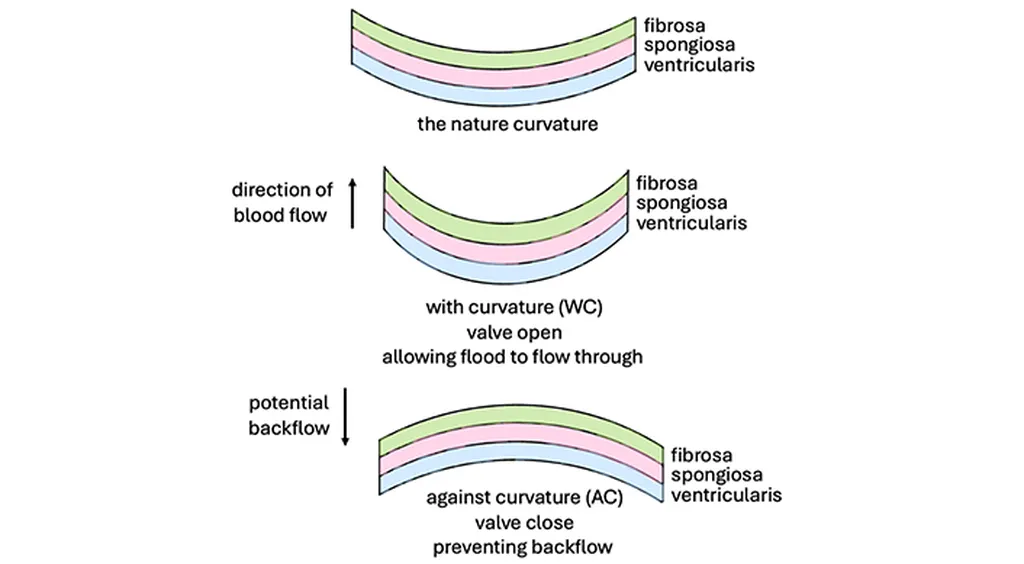In the realm of tissue engineering, a groundbreaking study has emerged from the University of Oxford, spearheaded by Zhaoying Ma from the Department of Materials. The research, published in the journal Exploration of BioMat-X (which translates to “Exploration of Biomaterials”), introduces a novel tri-layer scaffold designed to mimic the native structure and mechanical properties of heart valve leaflets. This innovation could potentially revolutionize the field of cardiovascular tissue engineering and open new avenues for medical device development.
The study focuses on creating a scaffold that closely resembles the natural composition and behavior of heart valve tissues. The scaffold is composed of type I atelocollagen, hyaluronic acid (HA), and a novel fibrillar elastin gel. The use of atelocollagen is particularly noteworthy as it highlights the non-antigenic potential of the design, reducing the risk of immune rejection.
“Our goal was to fabricate a scaffold that not only mimics the structure but also the mechanical properties of native heart valve leaflets,” explained Zhaoying Ma. “The bending anisotropic behavior, where the material responds differently when bent with or against the curvature, is crucial for the functionality of heart valves.”
The fabrication process involved freeze-drying the porous scaffolds and crosslinking them using 1-ethyl-3-(3-dimethylaminopropyl)carbodiimide (EDC) and N-hydroxysuccinimide (NHS). The microstructure and fibrillogenesis were imaged using scanning electron microscopy (SEM), revealing a seamless transition between layers and tailored porosity for potential biological studies. Fourier transform infrared spectroscopy (FTIR) confirmed effective crosslinking and preservation of the backbone structure.
Dynamic mechanical analysis (DMA) characterized the compressive and bending properties of the scaffolds in both hydrated and non-hydrated states. The tri-layer scaffolds exhibited the desired J-curve stress-strain response when hydrated, indicating their suitability for physiological conditions. Notably, the scaffolds showed anisotropic bending behavior with a bending modulus of 5.41 ± 1.14 kPa in the with curvature (WC) direction and 7.98 ± 2.22 kPa in the against curvature (AC) direction.
“This research represents a significant step forward in the development of tissue-engineered heart valves,” said Ma. “The successful introduction of bending anisotropy in physiological conditions, along with the suitable microstructure and promising mechanical properties, makes this design a potential candidate for future medical applications.”
The implications of this research extend beyond the immediate medical applications. The development of such advanced biomaterials could have a profound impact on the energy sector, particularly in the realm of medical devices and implants. As the demand for more biocompatible and durable materials grows, innovations like this tri-layer scaffold could pave the way for next-generation medical technologies.
The study’s findings were published in Exploration of BioMat-X, a journal dedicated to the exploration of biomaterials and their applications. This research not only advances our understanding of tissue engineering but also sets the stage for future developments in the field, offering hope for improved cardiovascular treatments and medical devices.
As the scientific community continues to push the boundaries of biomaterial science, the work of Zhaoying Ma and her team serves as a testament to the potential of interdisciplinary research. The tri-layer scaffold represents a significant milestone in the quest for more effective and biocompatible medical solutions, with the potential to reshape the future of cardiovascular care.

